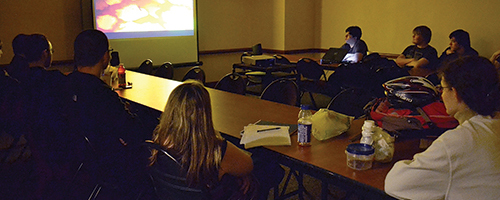Zombie movies aren’t usually serious business. Films of the genre generally have a recognizable aesthetic. It includes a fair dose of humor, along with a nice gore factor–basically mindless entertainment.
A second death
Zombie movies aren’t usually serious business. Films of the genre generally have a recognizable aesthetic. It includes a fair dose of humor, along with a nice gore factor–basically mindless entertainment. What set 2002’s 28 Days Later apart from other movies of its ilk was the sheer quality of filmmaking. It wasn’t just a great zombie movie, it was just a great movie. It stood on it’s own, away from the aesthetic archetype. The follow-up, the soon-to-be-released 28 Weeks Later, follows in a similar manner. It is great cinema.
28 Weeks Later follows up (as you may expect) 28 weeks after the initial outbreak of rage disease. Now, “the infected” have died off–having not been able to eat anything for lack of, um, food–and reconstruction and repopulation begins. A family is reunited, remembering harrowing tales of infection. Then, something unexpected happens. It turns out that there is immunity to the disease. The kids figure this out when they find their mother, infected but alive. The infection inevitably spreads among the new populace and drama ensues, which isn’t to put it lightly. This movie has some emotionally gut-wrenching scenes. You know that scene in every zombie movie, the one where a loved one is turning evil and the main character has to kill them? This movie uses that scene in a non-lame way; so it actually has resonance and meaning.
My one gripe with the story and acting is the reaction of the father (Robert Carlyle) post-zombification. Once they have the virus, these beasts are supposed to be unthinking killing machines. It doesn’t follow that this particular zombie would be able to follow his kids around and then, at an opportune moment, attack. Rage-fueled sub-humans just aren’t that smart. I can only guess that the director was trying to put a more human face on the traditional zombie. Nice try, but it just seemed really out of place.
The visualization of 28 Weeks Later is similar to that of its predecessor. Dark and grimy, it is about capturing what a real post-disease ravaged England would look like. In the action scenes, the “shaky-cam” effect is used. It is mostly effective at conveying a sense of terror, though like any film that uses it extensively, it grates on the viewers’ senses after awhile.
28 Weeks Later is at its best when the main characters are on the run. A world with zombies is an inherently difficult space to inhabit. People are unsure what to do and unsure how to act. The military (occupying U.S. forces) knows that the only way to control the outbreak is to kill everything. Period.
The film is great because the message isn’t clear. It might be making a political statement. It might not. What it does do is engage and satisfy the viewer. 28 Weeks Later is the distillation of the zombie-movie genre as art, and it makes for excellent cinema.



